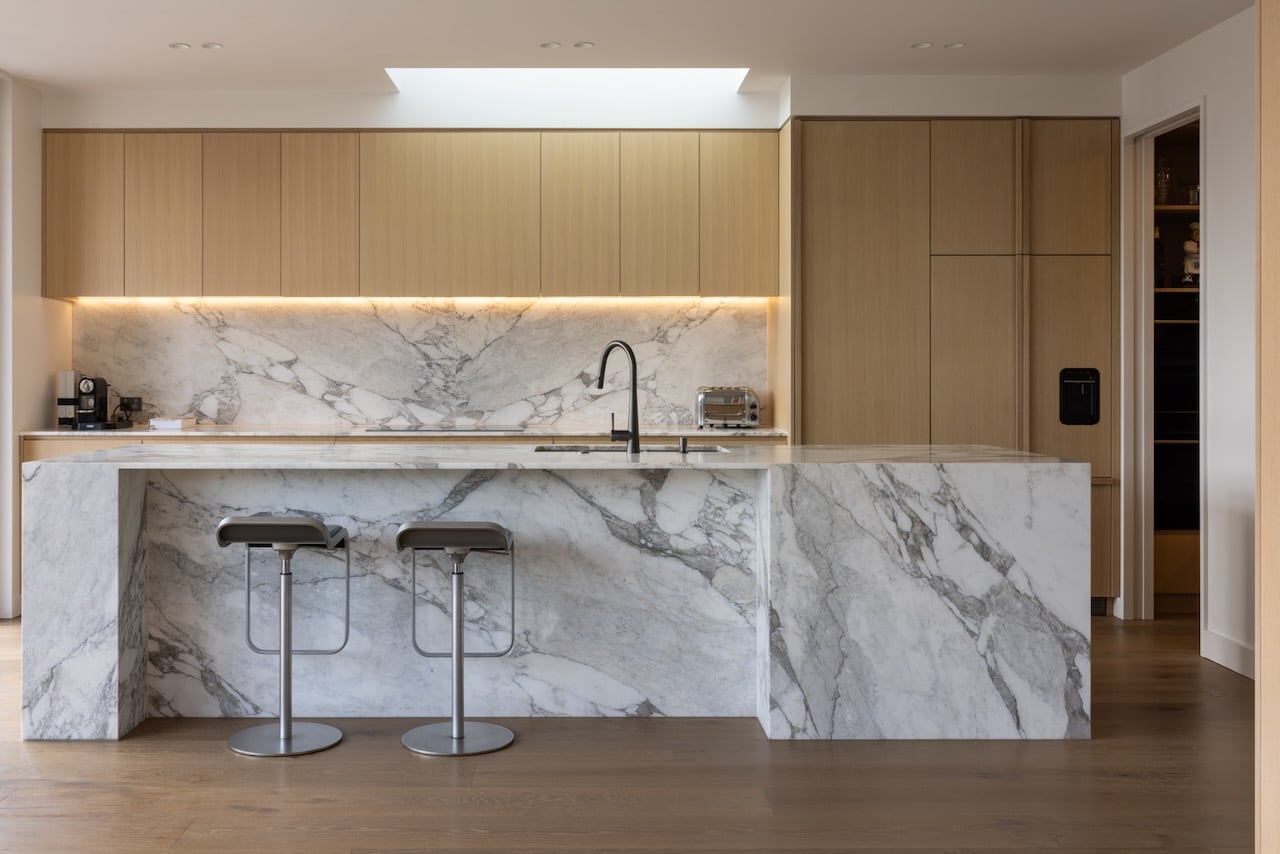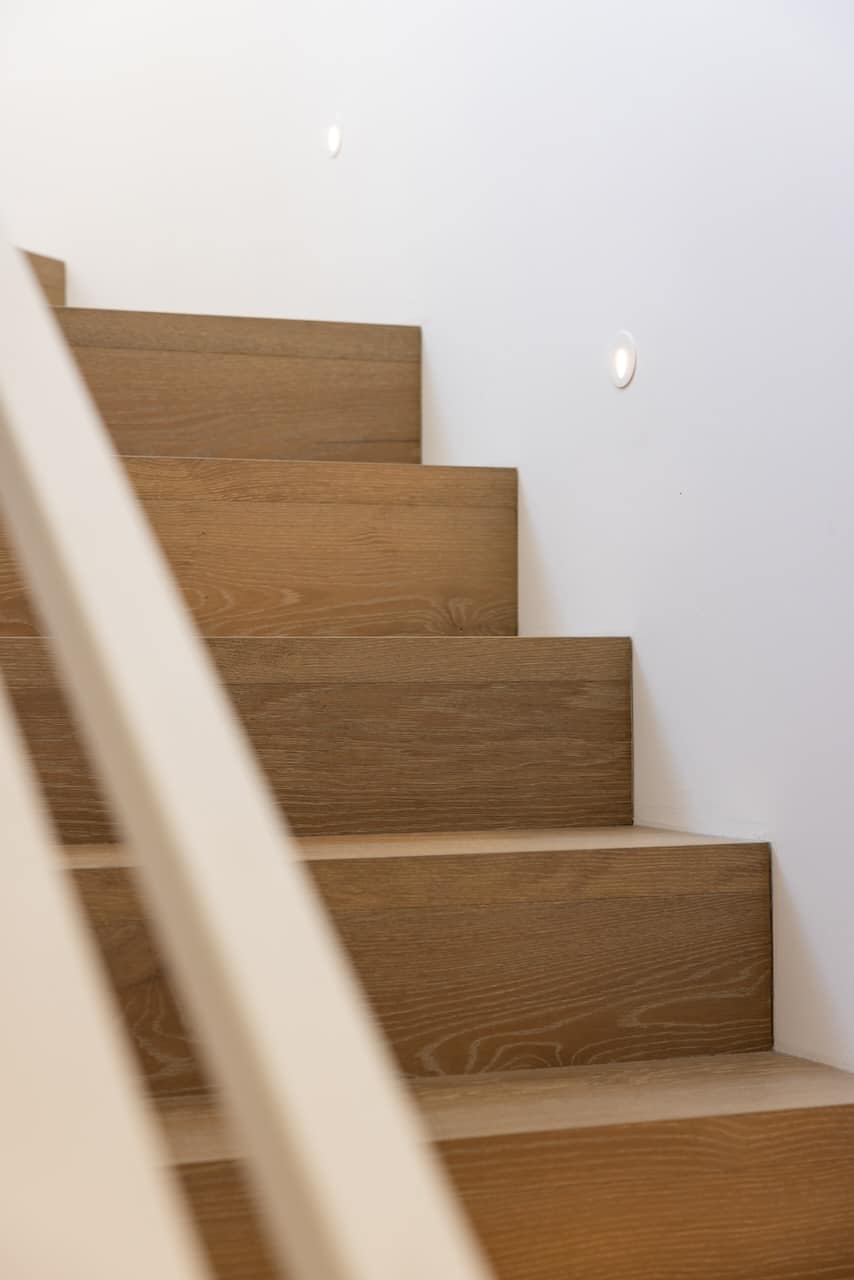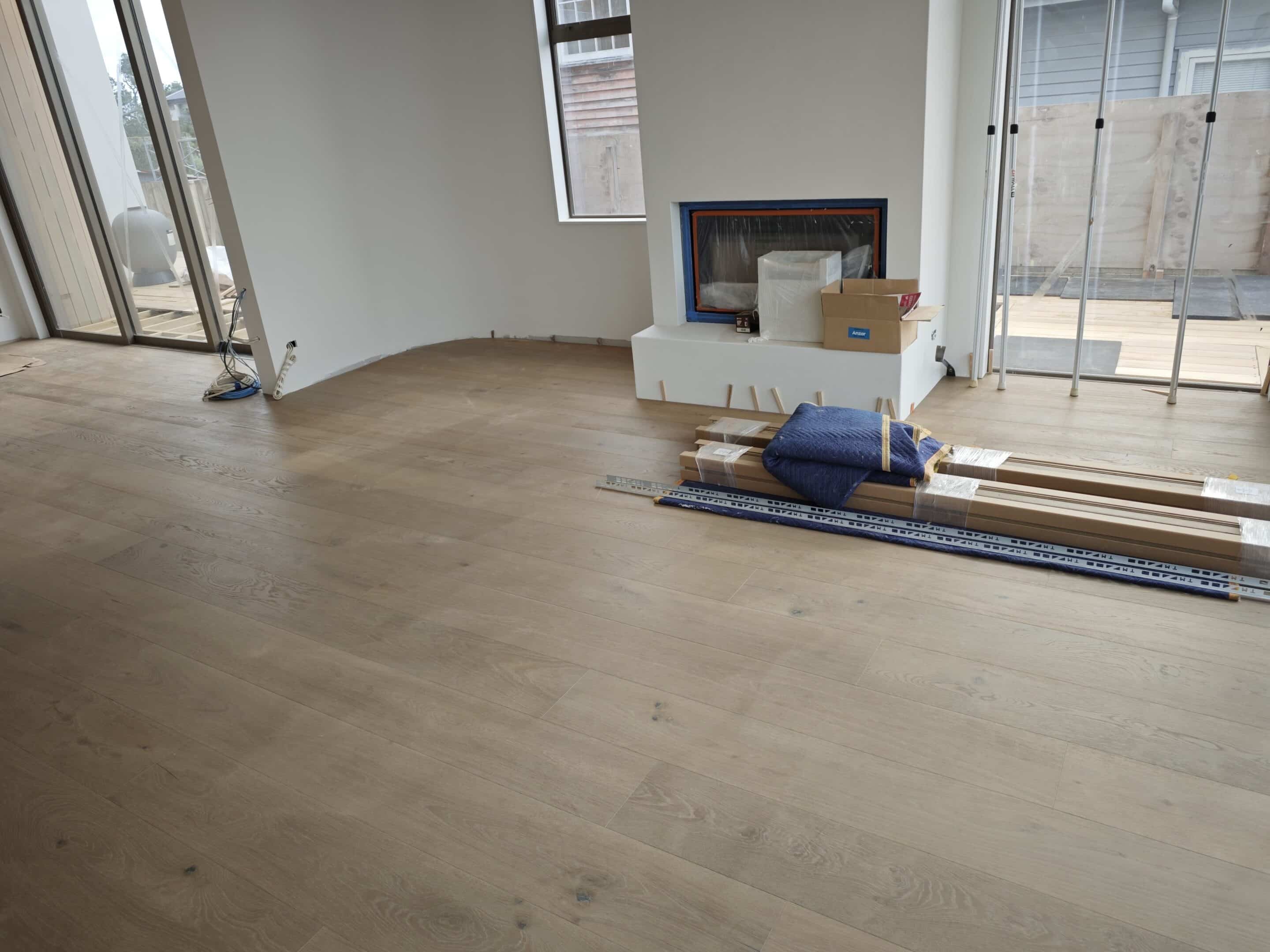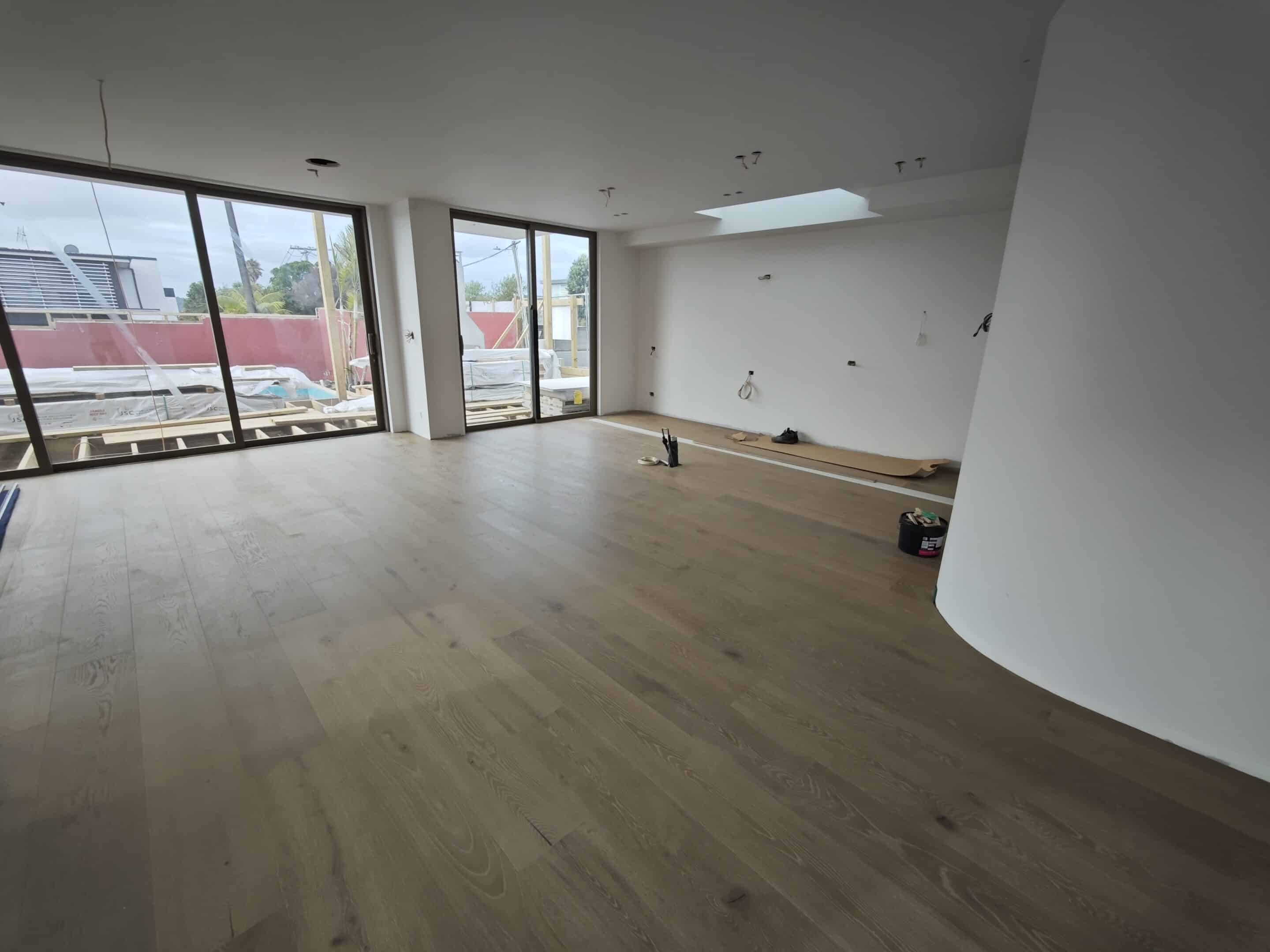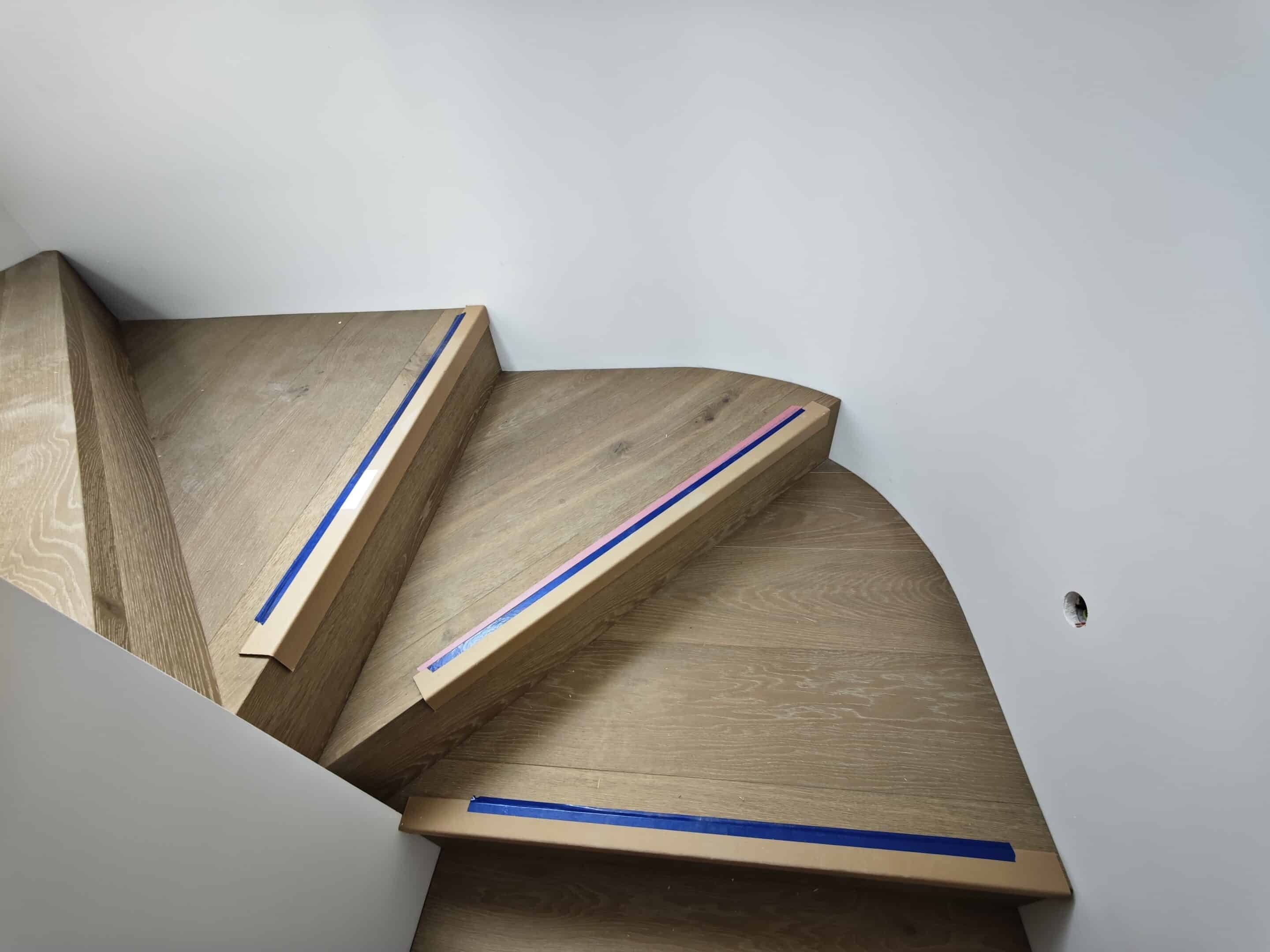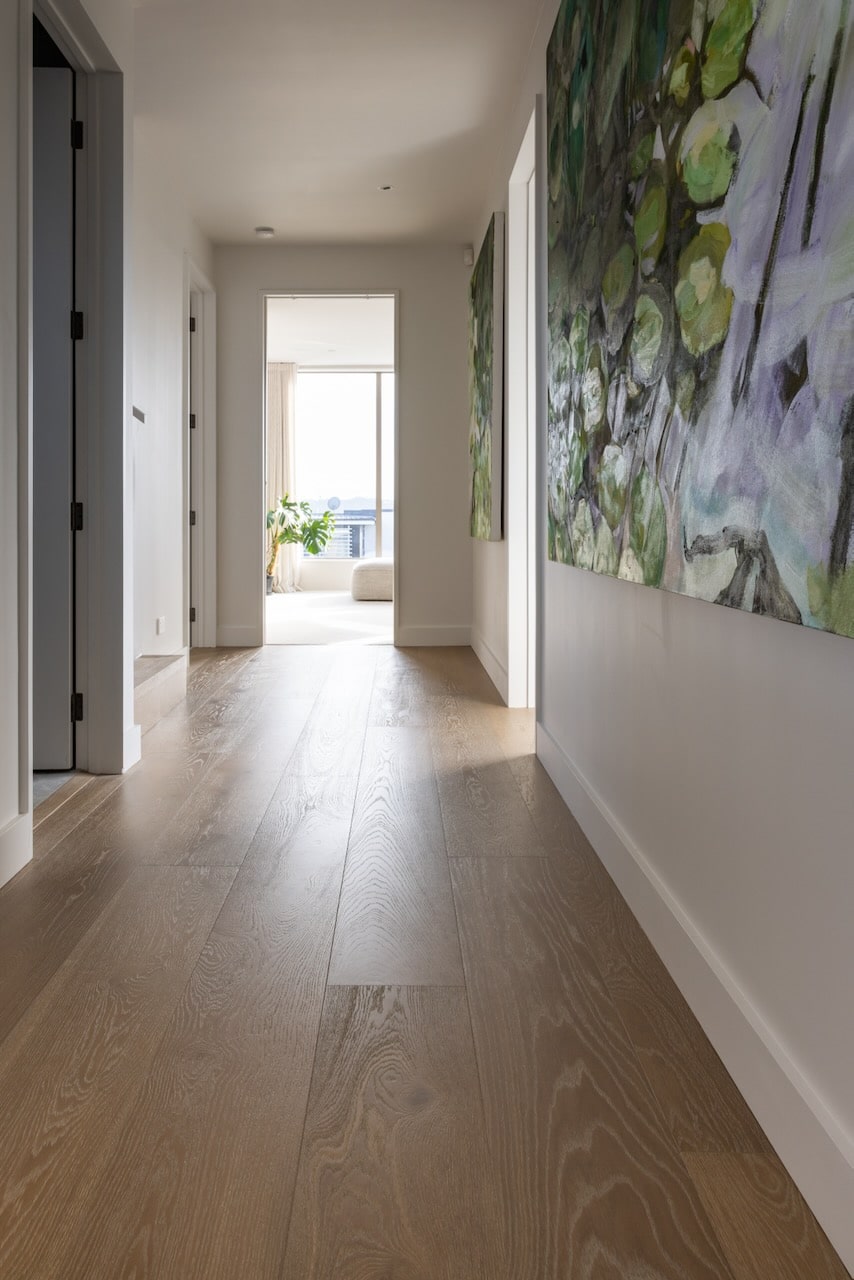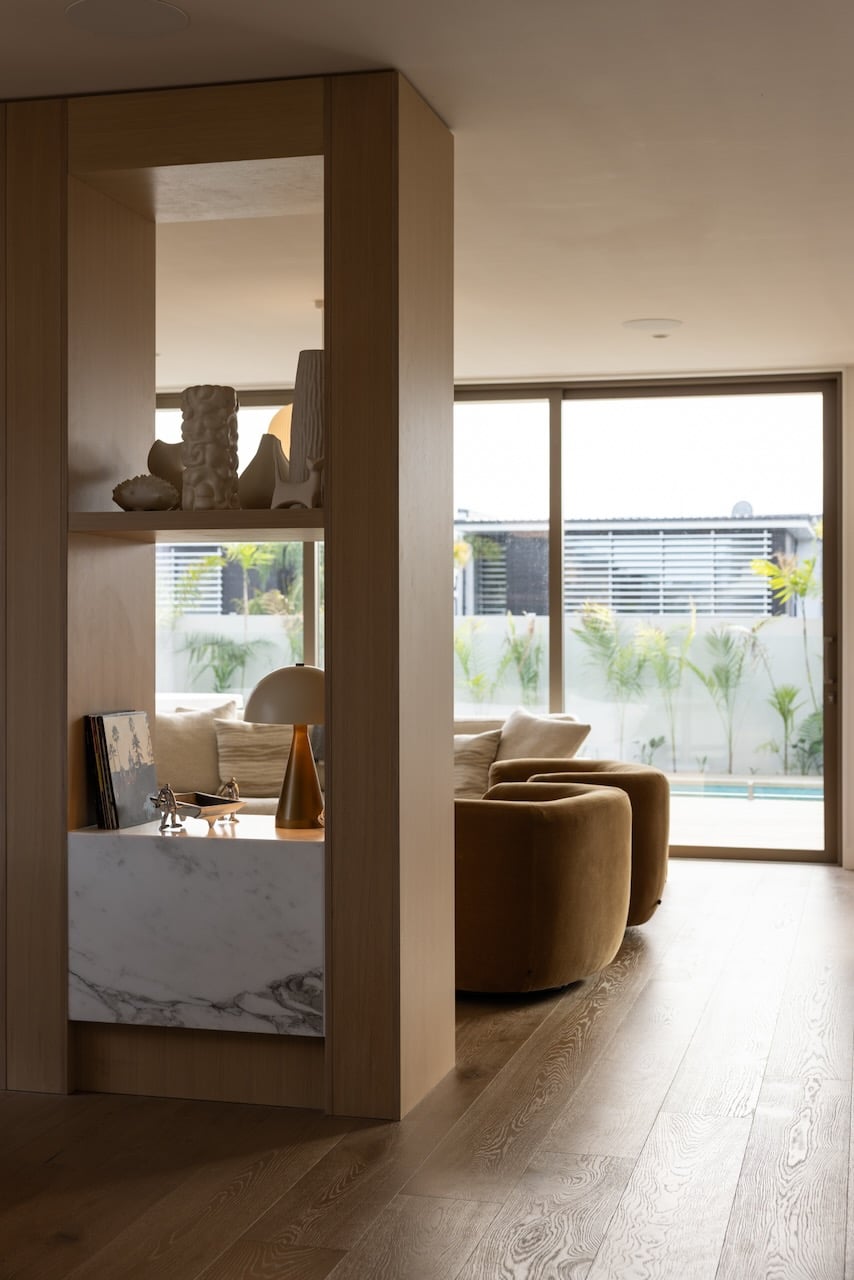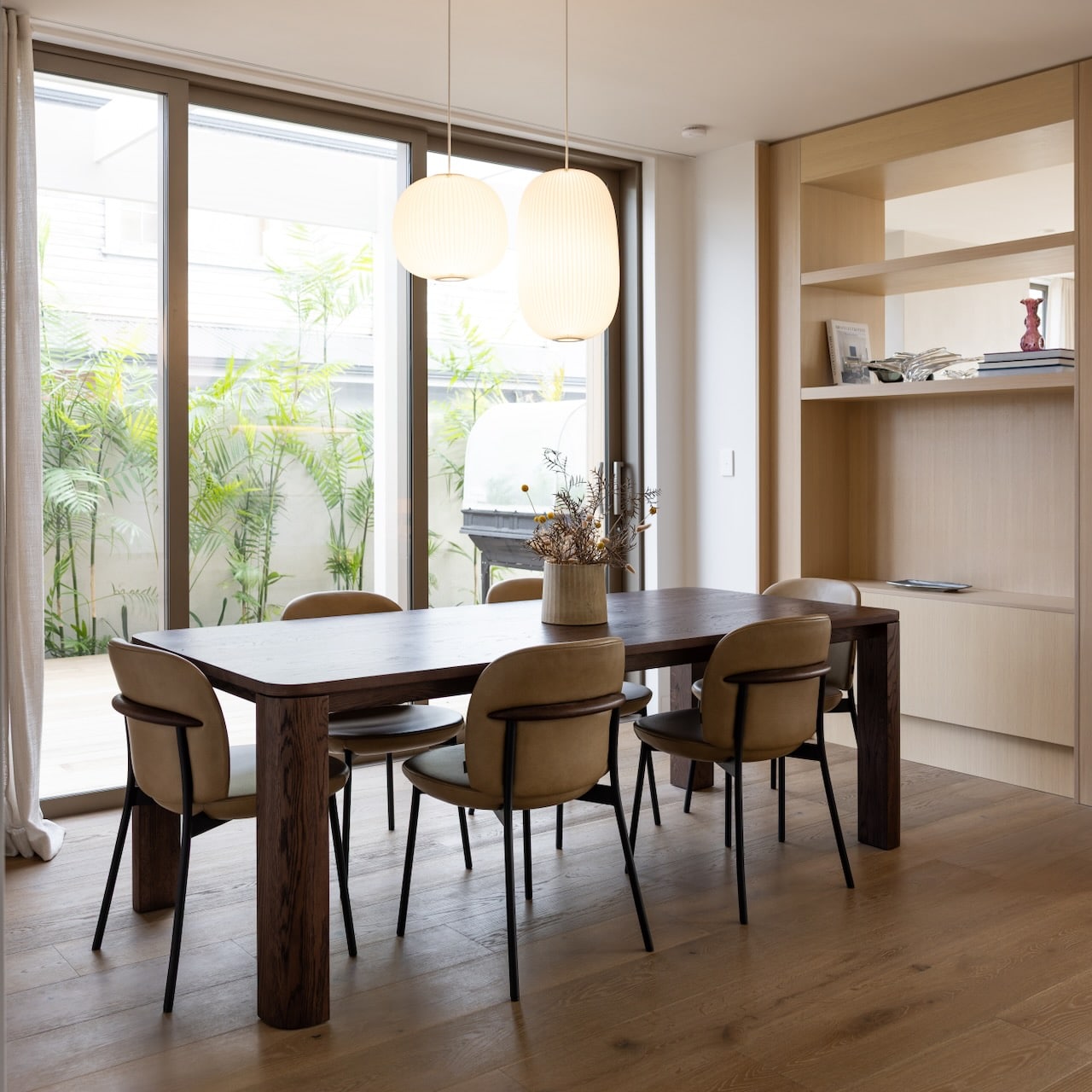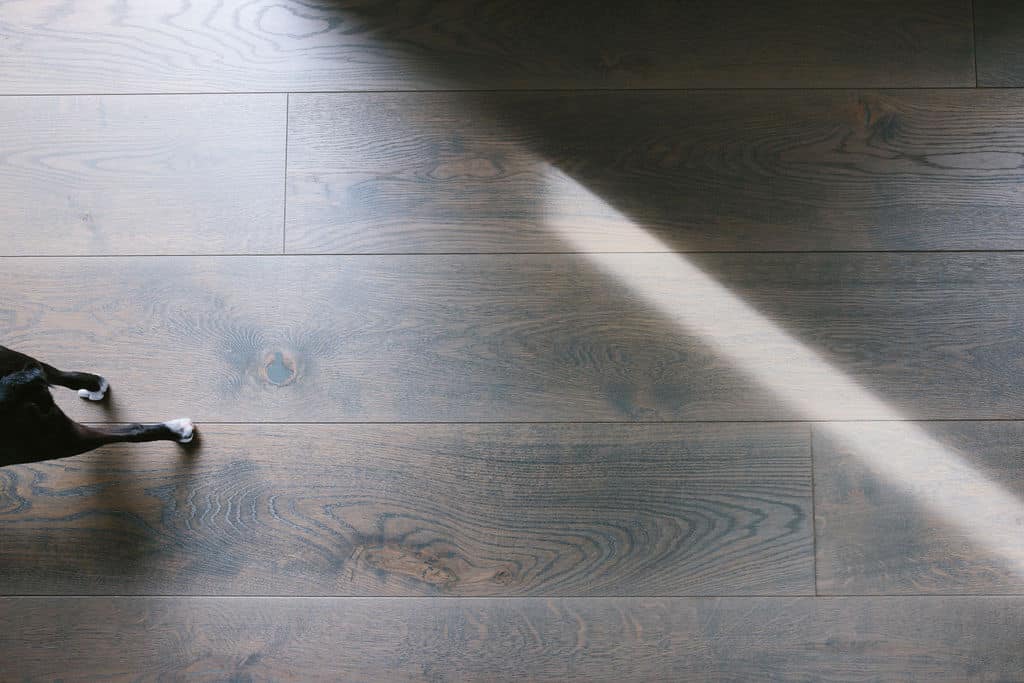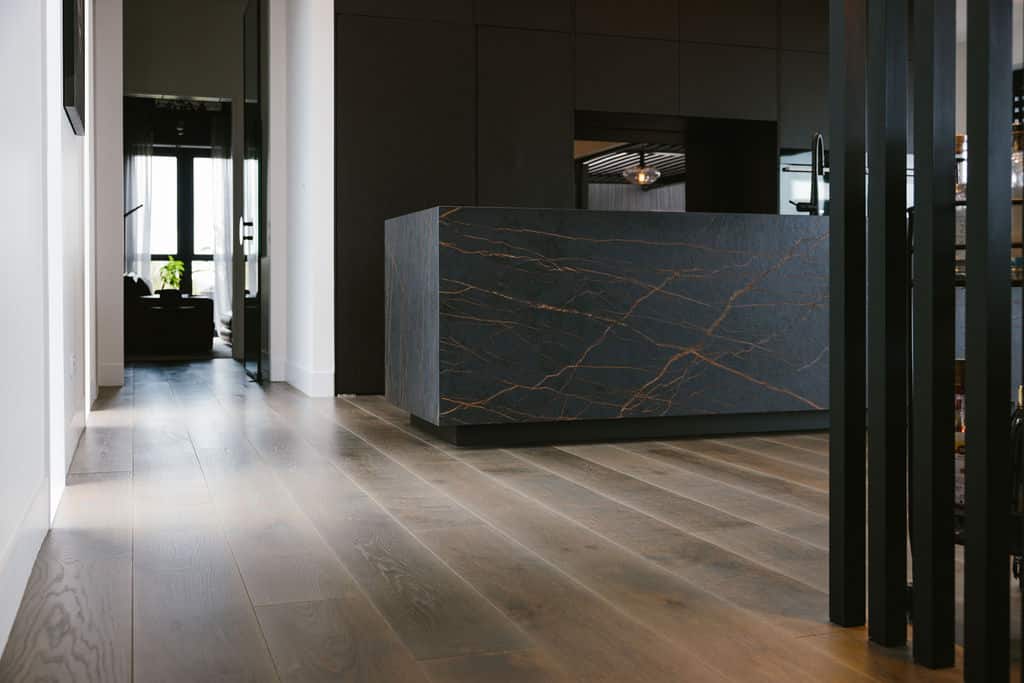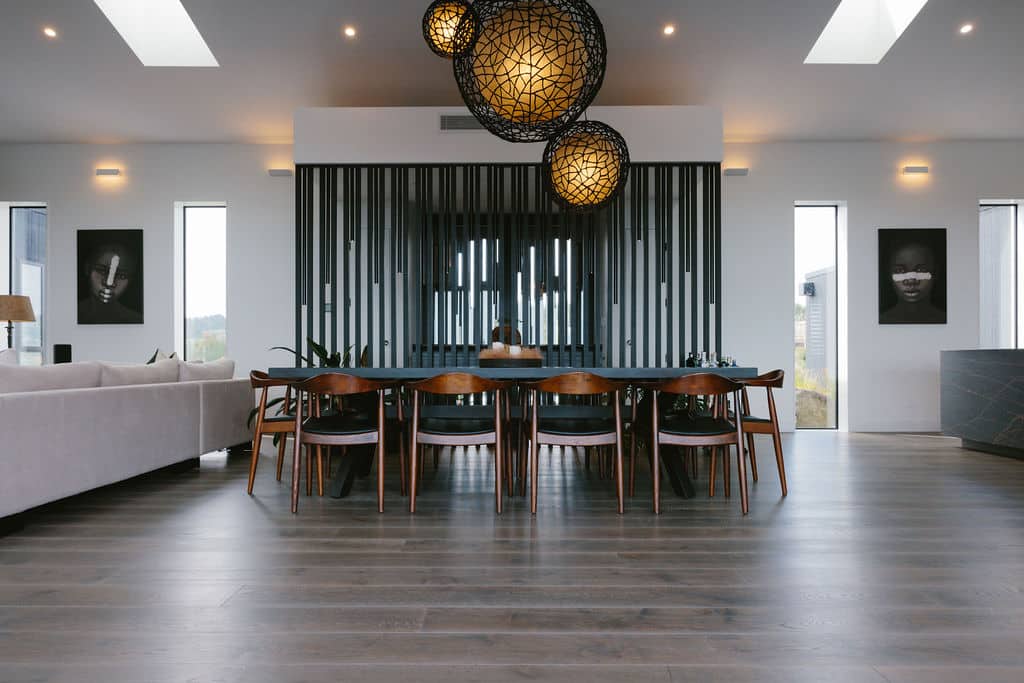Limn Residence Westmere – Oak Chambord Flooring Case Study
Architects: Cosgrove Goodwin
Flooring: Vienna Woods – Chateau Collection, Oak Chambord, 240mm wide plank, 2.2m lengths
Photography: Mark Scowan
A Private Westmere Oasis
In Auckland’s coastal suburb of Westmere, the Limn Residence by Cosgrove Goodwin sits as a refined, light-filled retreat. The home’s architectural language blends sculptural curves, finely detailed stonework, and considered sightlines, creating a sense of calm and connection to its surroundings. A smooth indoor-outdoor transition leads to a pool area, while interiors are bathed in an ever-changing play of natural light across the day.
At the heart of the palette is Vienna Woods’ Oak Chambord from the Chateau Collection – a 240mm wide plank in generous 2.2m lengths. The board’s soft, natural tone and subtle texture complement the home’s warm, modern aesthetic.
Meeting E3 Compliance in the Kitchen
The kitchen and dining zones flow seamlessly to outdoor entertaining areas, and with that comes the question every architect must address – compliance with E3 Internal Moisture under the NZ Building Code.
Because Oak Chambord is an engineered timber with a lacquered finish, it can be used in kitchens when correctly detailed. Prefinished boards mean the wear layer is fully sealed before installation, limiting moisture ingress. The boards were installed over a laser-finished concrete slab with appropriate vapour control layers, satisfying both functional performance and compliance.
The Stairway Challenge – Slip Resistance and Optics
-
Slip Resistance Compliance
The local council required proof that the engineered timber used for stair cladding met the slip resistance requirements of AS/NZS 4586:2004.
We provided a slip resistance test report showing a mean coefficient of friction of 0.62, well above the required minimum of 0.40 for horizontal pedestrian surfaces . This cleared the way for approval without the need for additional surface treatments.
-
Optical Trip Hazard
While compliant, timber stair cladding can sometimes appear visually indistinguishable from the adjacent flooring, creating an optical trip hazard—particularly with the bottom step.
In this case, the lowest tread was blending too seamlessly into the hallway flooring. Options discussed included:
-
Introducing recessed LED strip lighting to the risers for visual contrast.
-
Integrating a fine metal strip into the nosing to catch light and define the edge.
Both solutions maintain aesthetic integrity while improving safety.
-
Execution Under a Tight Timeline
This project ran to a demanding schedule. The pre-finished Chambord boards and perfectly level concrete subfloor allowed for rapid progress, with the entire flooring installation completed in under a week. The precision of the product meant minimal on-site adjustments and a clean, efficient workflow.
Cosgrove Goodwin’s Architectural Approach
Cosgrove Goodwin are known for their finely crafted, site-responsive homes. Their work often explores natural materiality, light manipulation, and spatial flow – all of which are evident in Limn Residence.
Here, their use of curved internal forms, a striking stone wall in the foyer, and perfectly framed views out to the pool exemplify their skill in blending structure with softness. The wide oak planks reinforce the home’s grounded feel while offering warmth and continuity through each space.
The Result
The combination of Cosgrove Goodwin’s architectural precision and Vienna Woods’ Oak Chambord flooring delivers a home that is both sophisticated and deeply liveable. Every room benefits from the floor’s timeless character, while practical considerations – from E3 compliance in wet-adjacent areas to stair safety – were resolved without compromise to the design.
